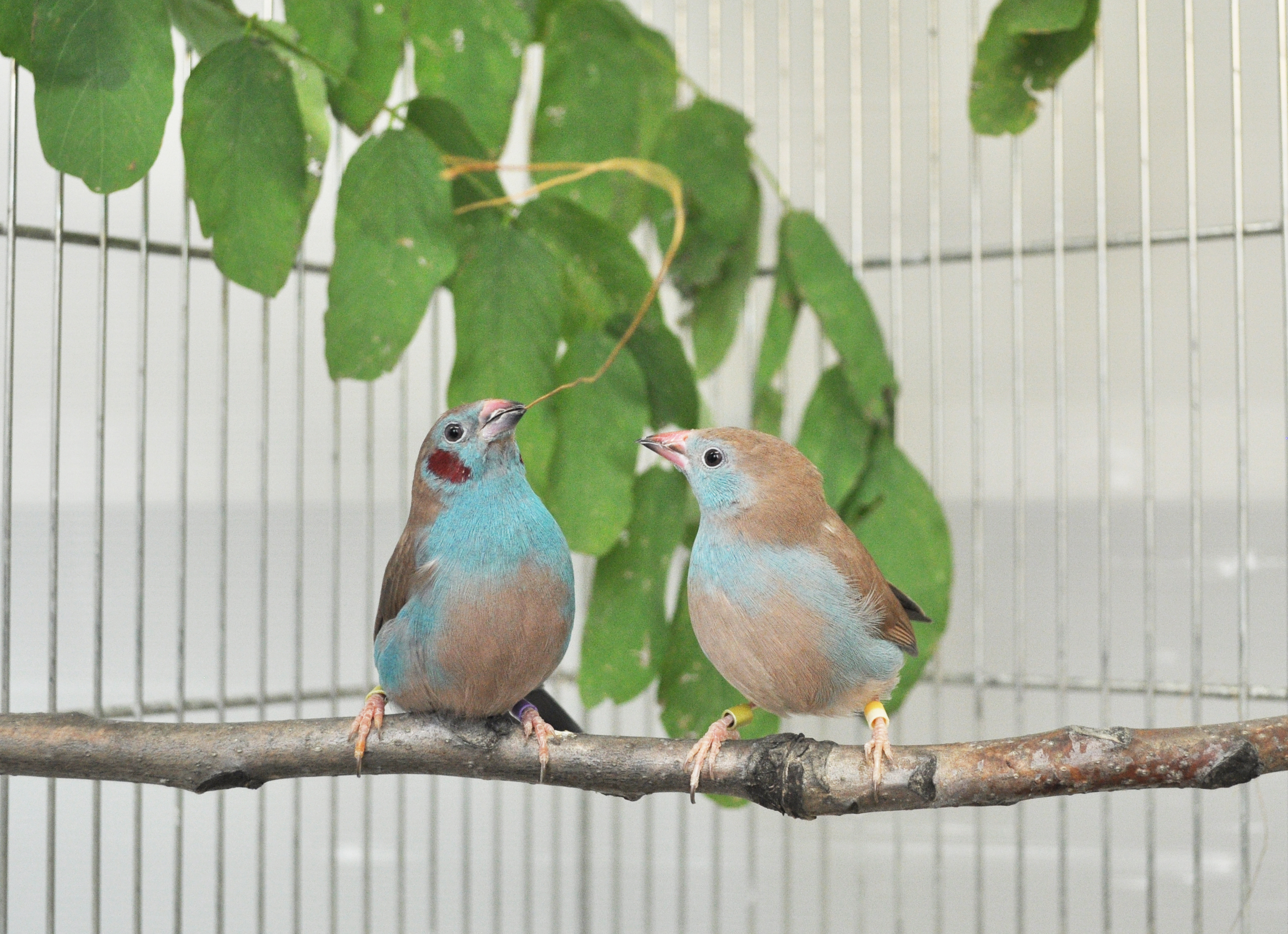Songbirds Woo Mates with Invisible Tap Dance

A rapid, invisible tap dance performed by courting songbirds may bring good vibrations to the search for a mate.
With the help of high-speed video, researchers from Hokkaido University in Japan and the Max Planck Institute for Ornithology in Germany have discovered that blue-capped cordon-bleu songbirds (Uraeginthus cyanocephalus) perform foot-stomping step dances during their courtship displays that are too quick to view with the naked eye. Because the birds only start tapping when their potential mates are on the same perch, the study authors think the dancers might punctuate the display with pleasing sounds or vibrations.
Blue-capped cordon-bleus are colorful East African birds with peach-and-white bellies and powder-blue chests and heads. They are monogamous, and both males and females dance, bob and sing when courting, all while holding a piece of nesting material aloft in their beaks. [Video: Watch the Tap-Dancing Birds in Action]
The new study, published today (Nov. 19) in the journal Scientific Reports, is the first to observe the rapid tap dancing. Researchers paired off eight female and eight male birds in cages and recorded their behaviors for 2 hours with high-speed video. In total, seven males and four females did courtship dances during the observation.
Both males and females paired their head-bobbing dance with fancy footwork, the researchers found. Males danced more often, bobbed more quickly and took more steps than females, but otherwise the choreography was similar between the sexes.
The birds tapped faster when sharing a perch with the object of their affection, perhaps as a way to add tactile vibrations to their otherwise visual and auditory display. Unlike humans, the birds might be able to see the footwork as well, the researchers wrote.
"A next step in the study of blue-capped cordon-bleus courtship display should be to investigate how singing, bobbing and stepping behaviors are coordinated within individuals and between partners," they wrote.
Sign up for the Live Science daily newsletter now
Get the world’s most fascinating discoveries delivered straight to your inbox.
Follow Stephanie Pappas on Twitter and Google+. Follow us @livescience, Facebook & Google+. Original article on Live Science.

Stephanie Pappas is a contributing writer for Live Science, covering topics ranging from geoscience to archaeology to the human brain and behavior. She was previously a senior writer for Live Science but is now a freelancer based in Denver, Colorado, and regularly contributes to Scientific American and The Monitor, the monthly magazine of the American Psychological Association. Stephanie received a bachelor's degree in psychology from the University of South Carolina and a graduate certificate in science communication from the University of California, Santa Cruz.









